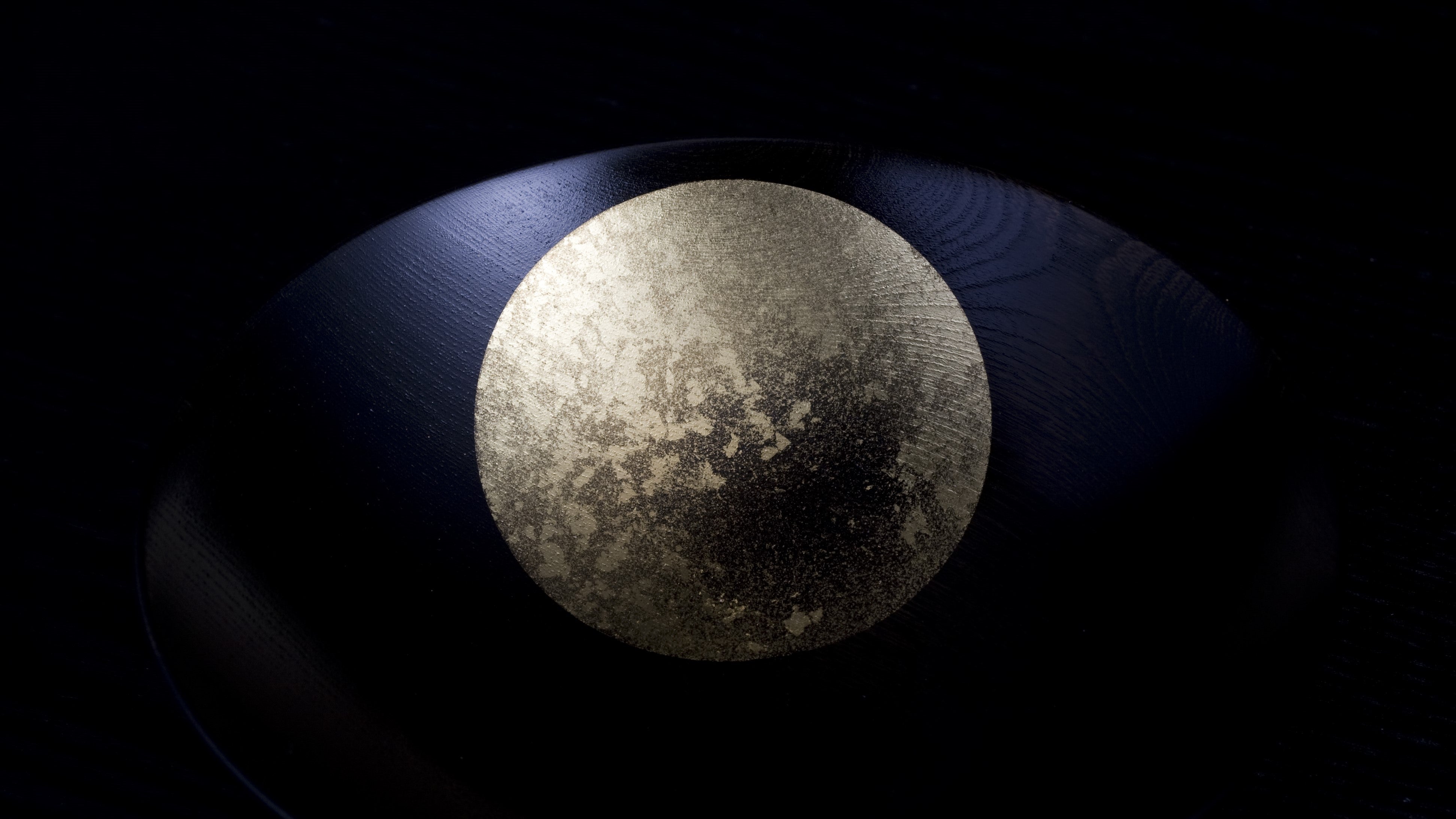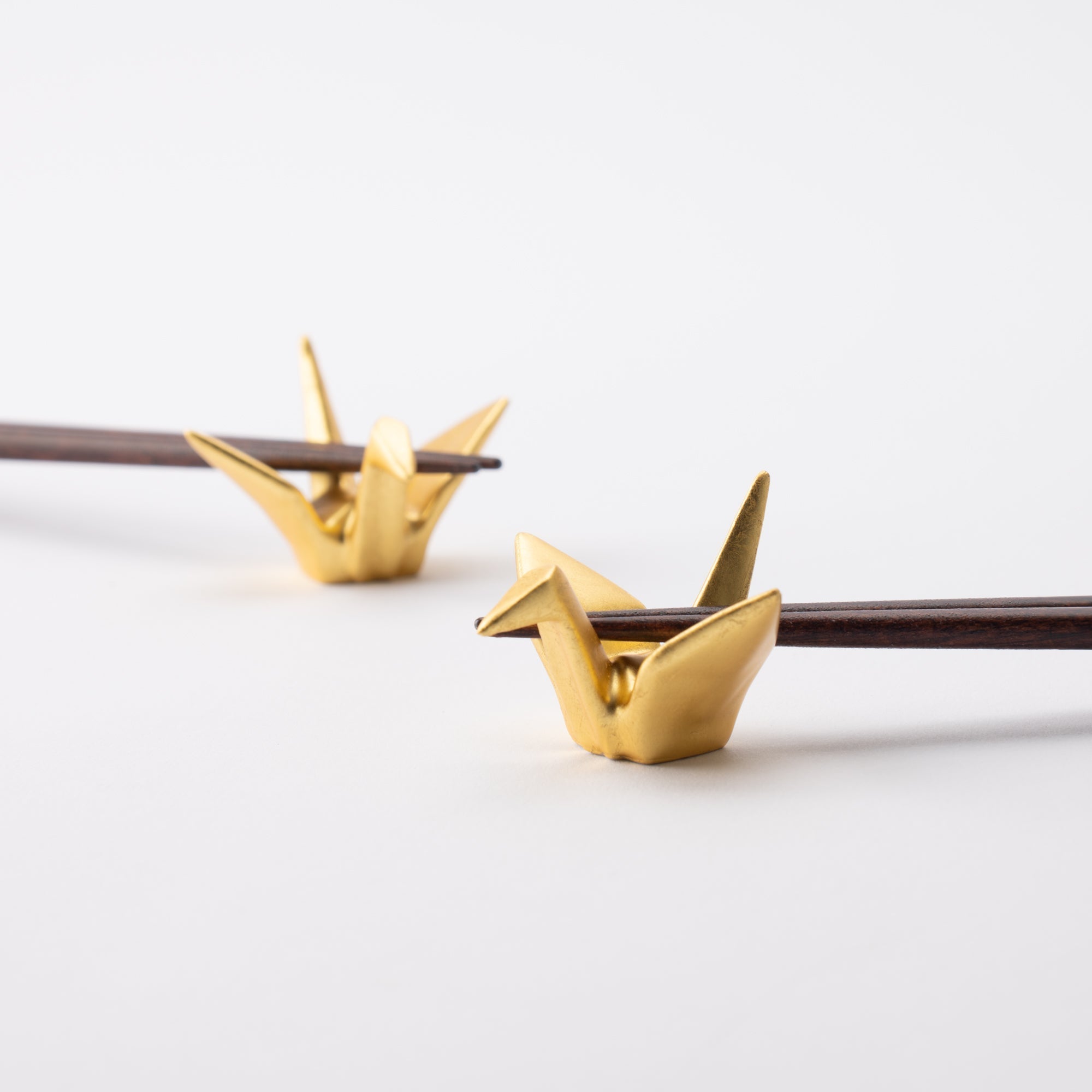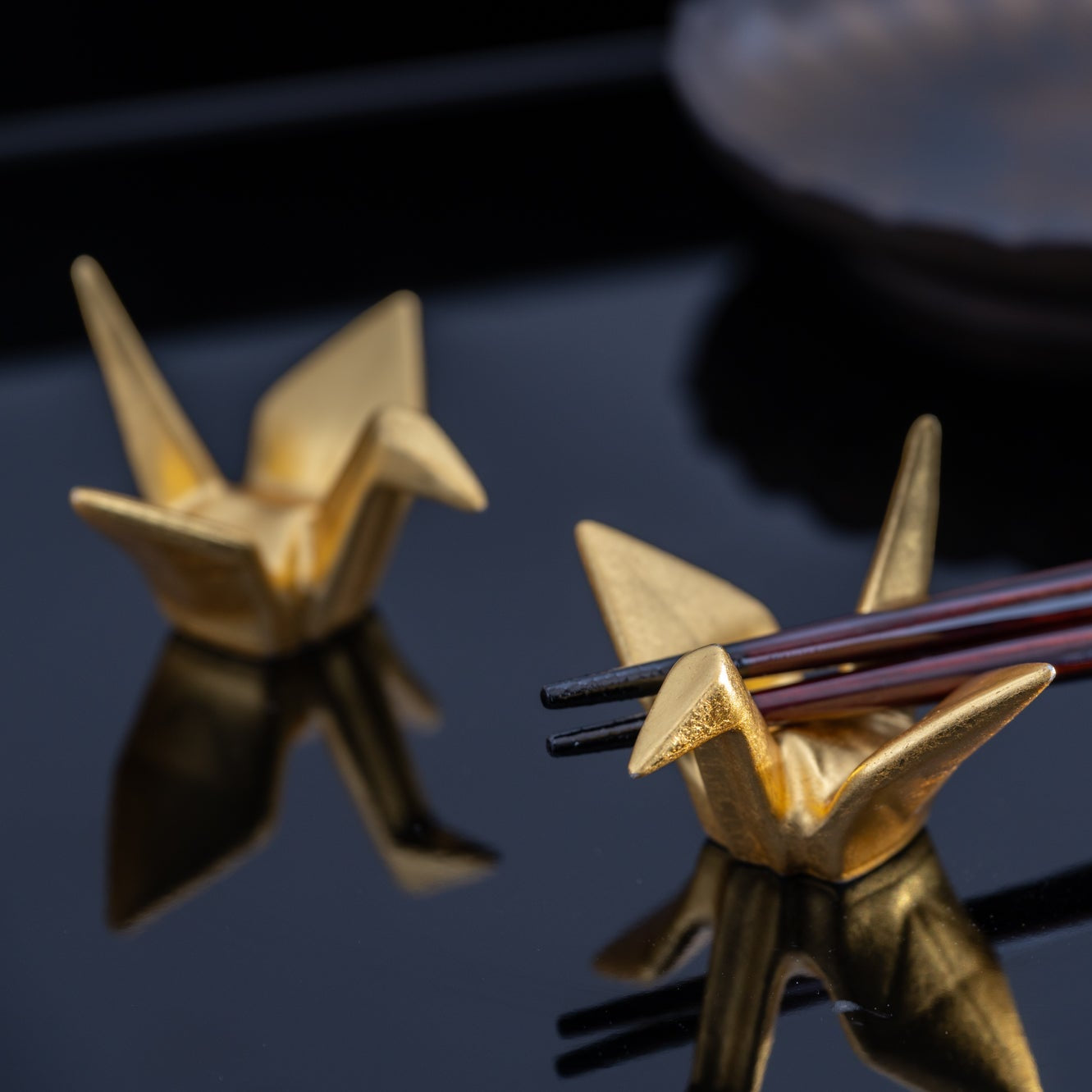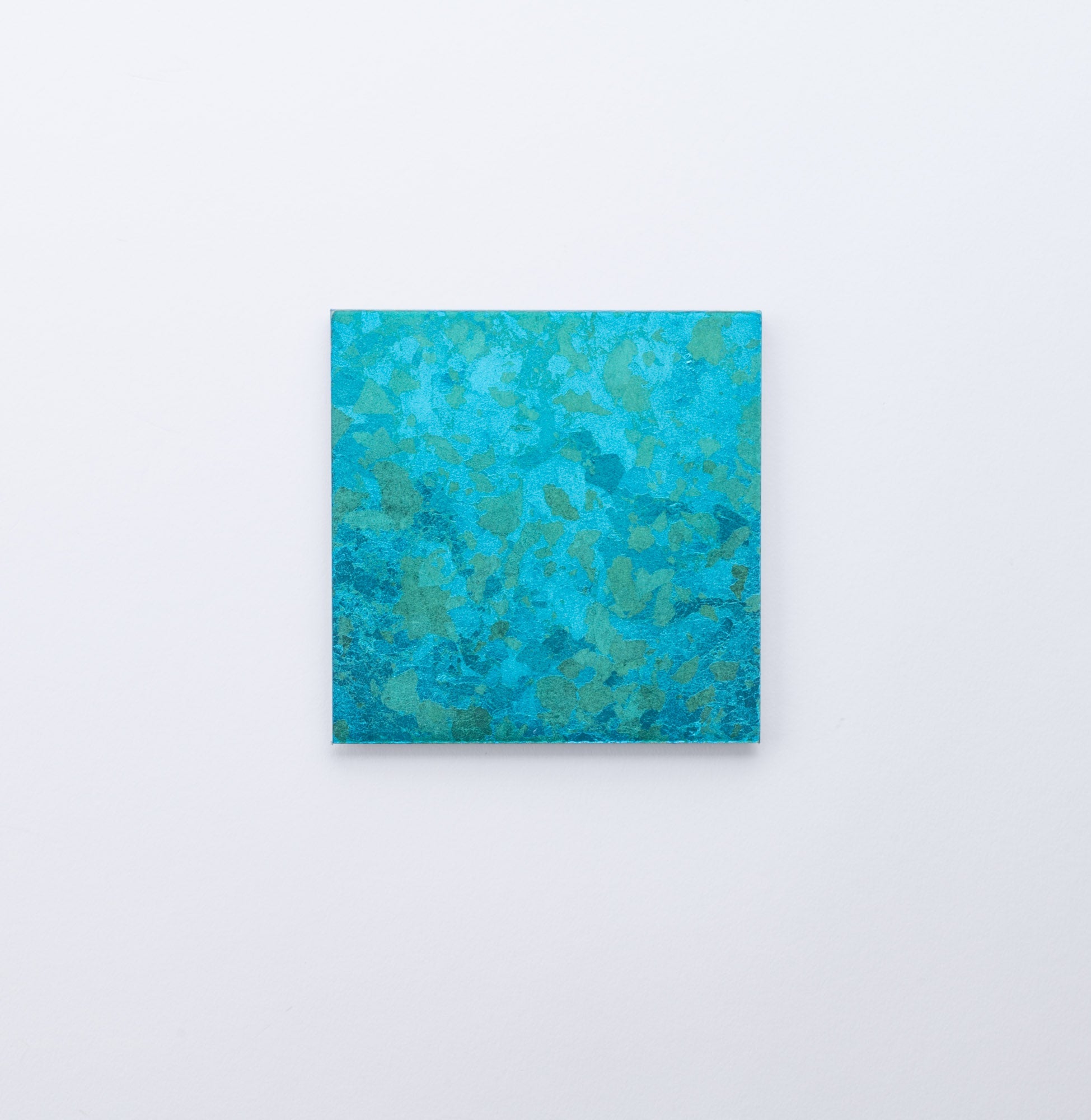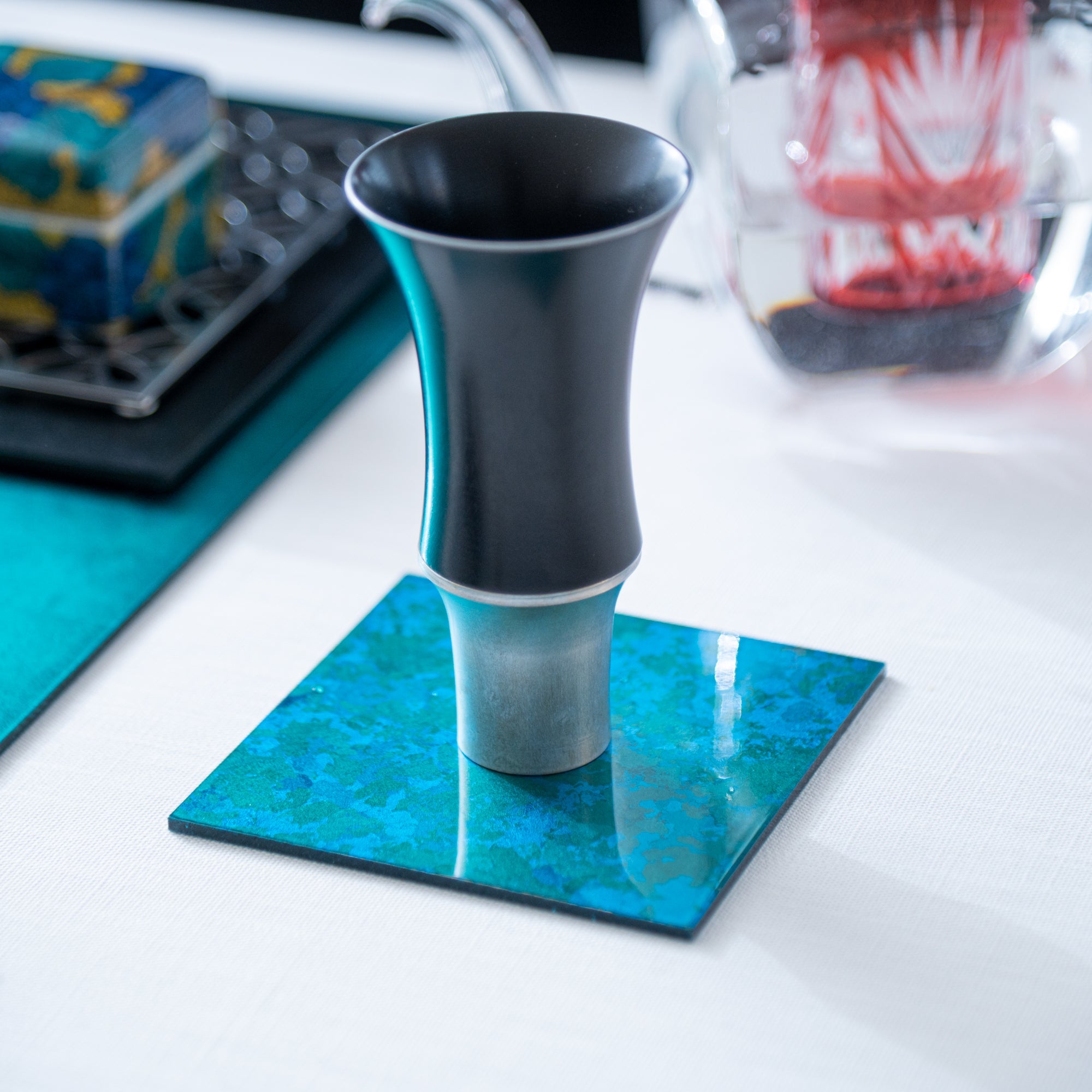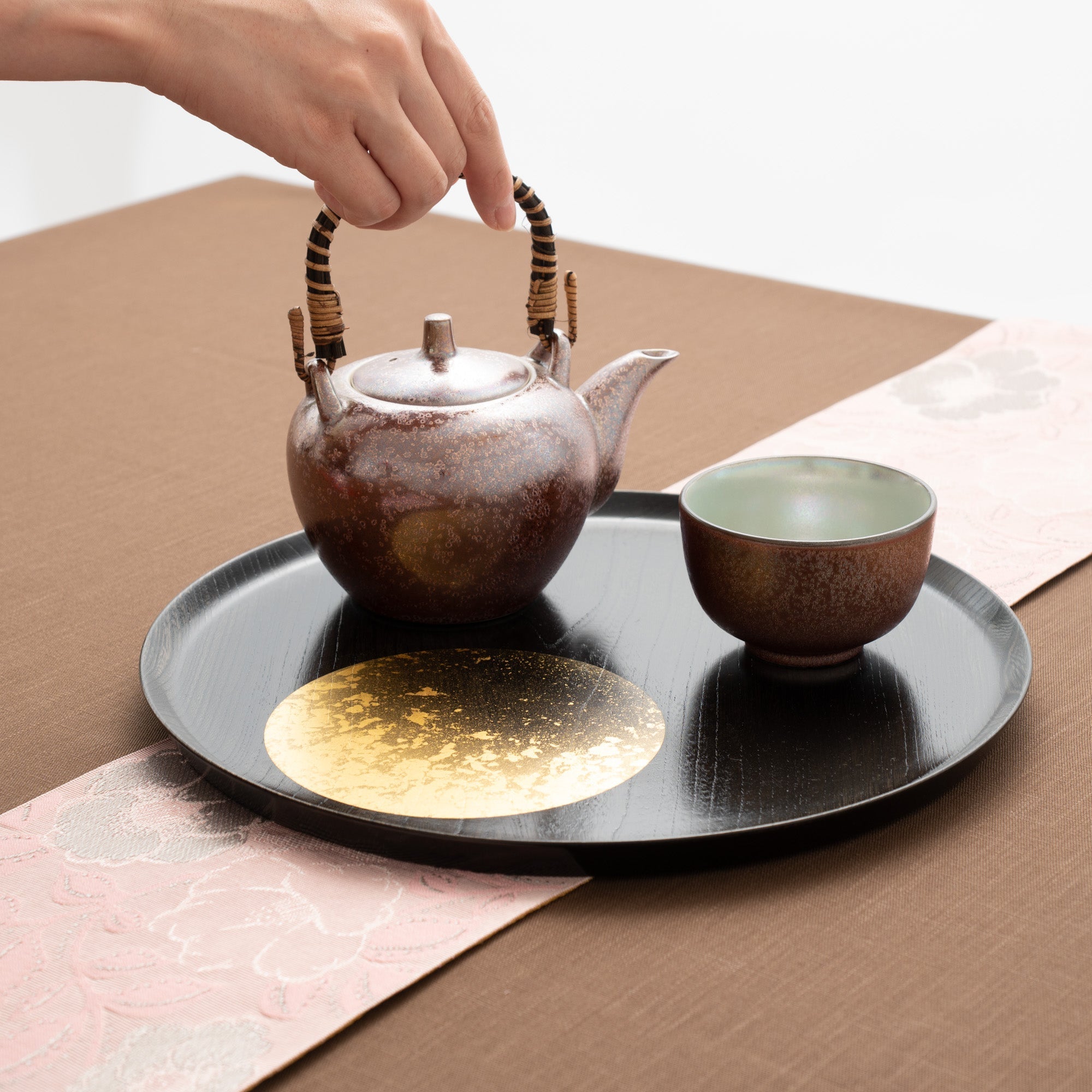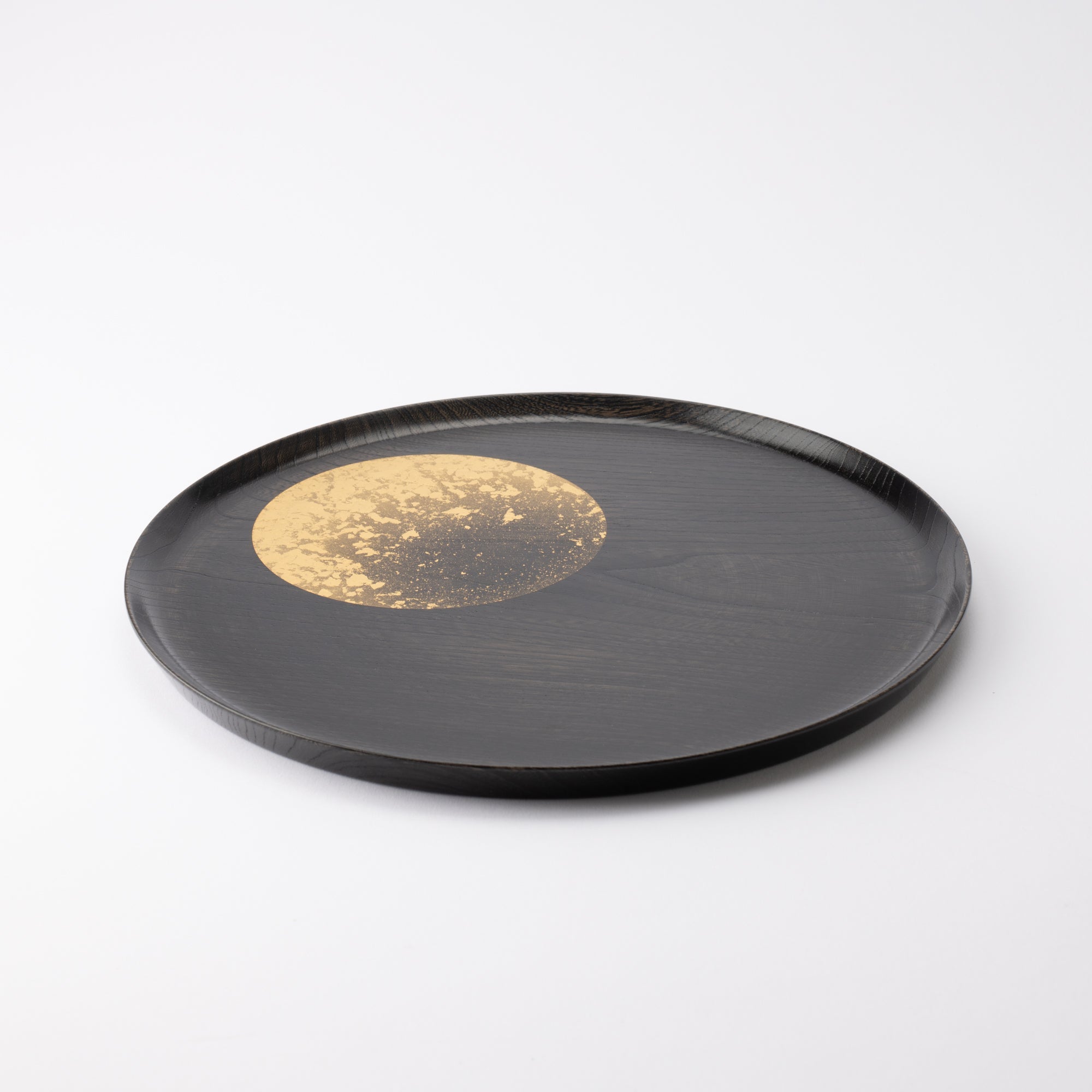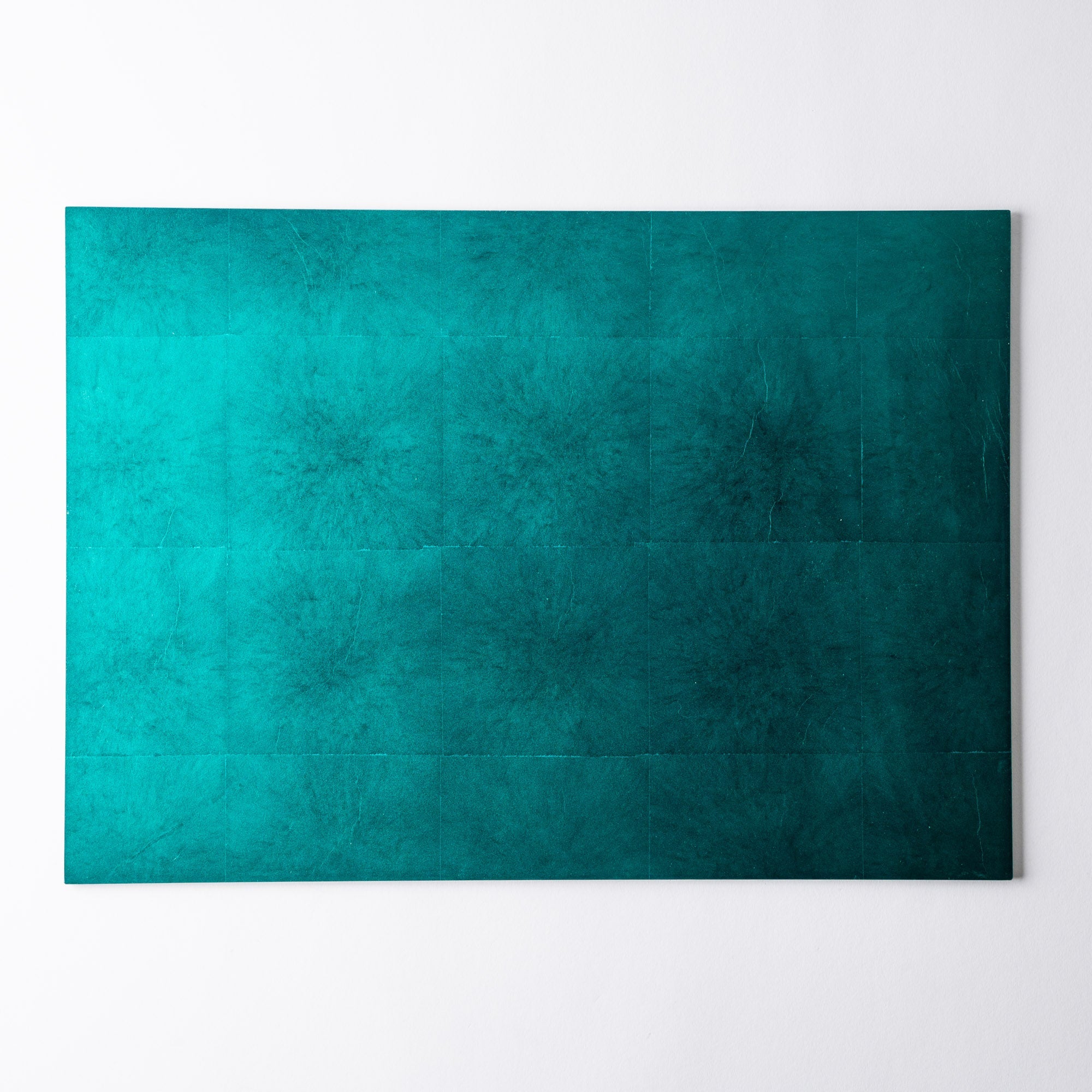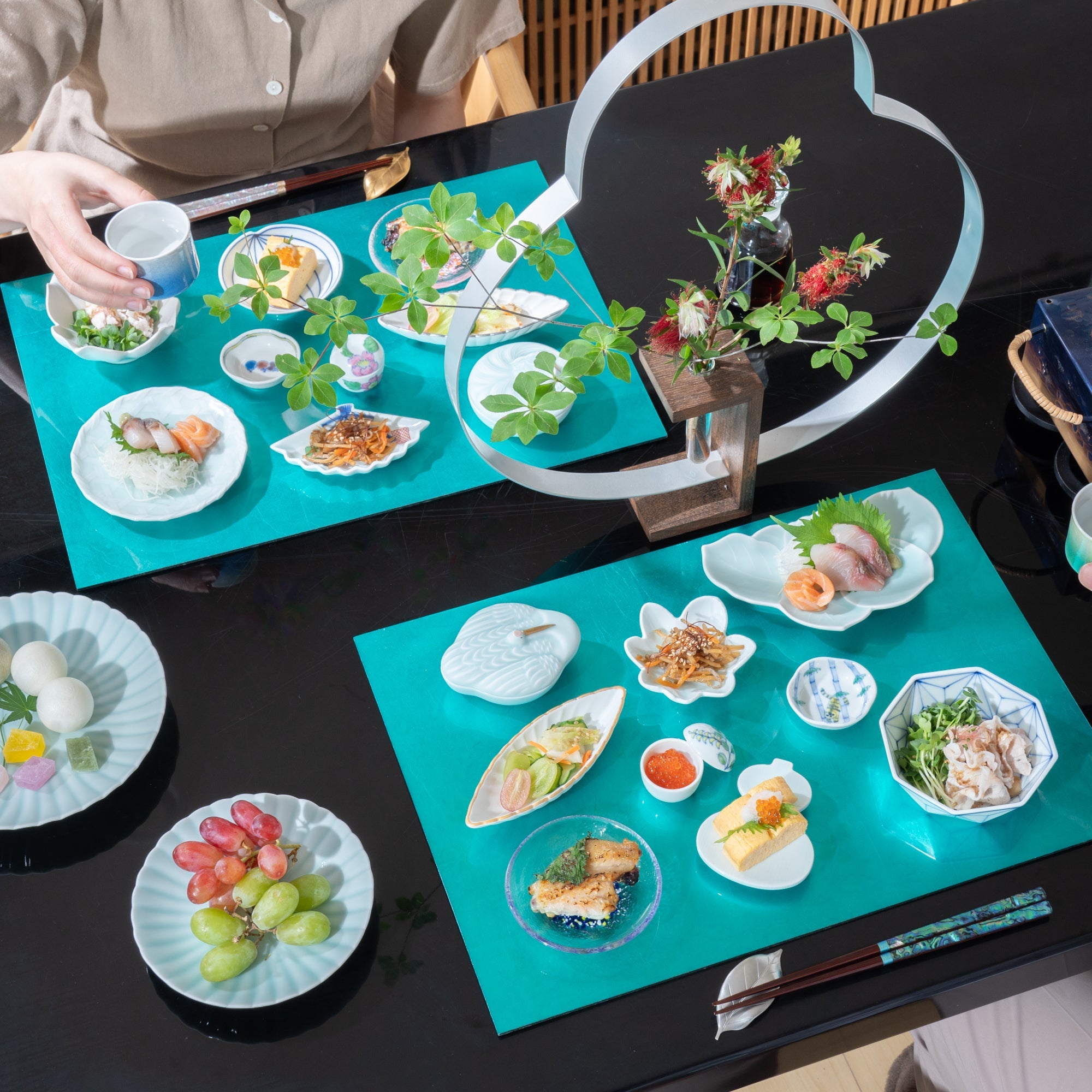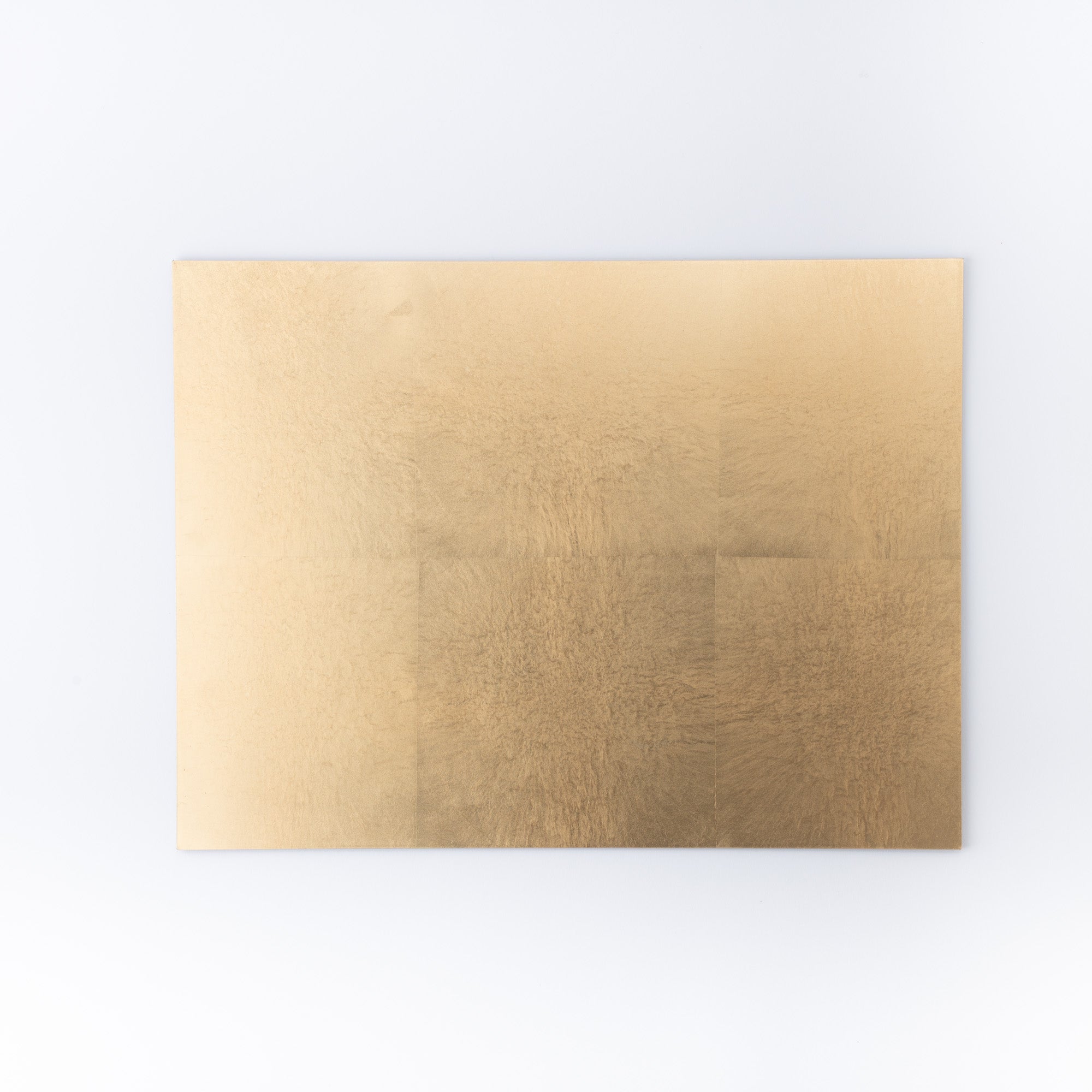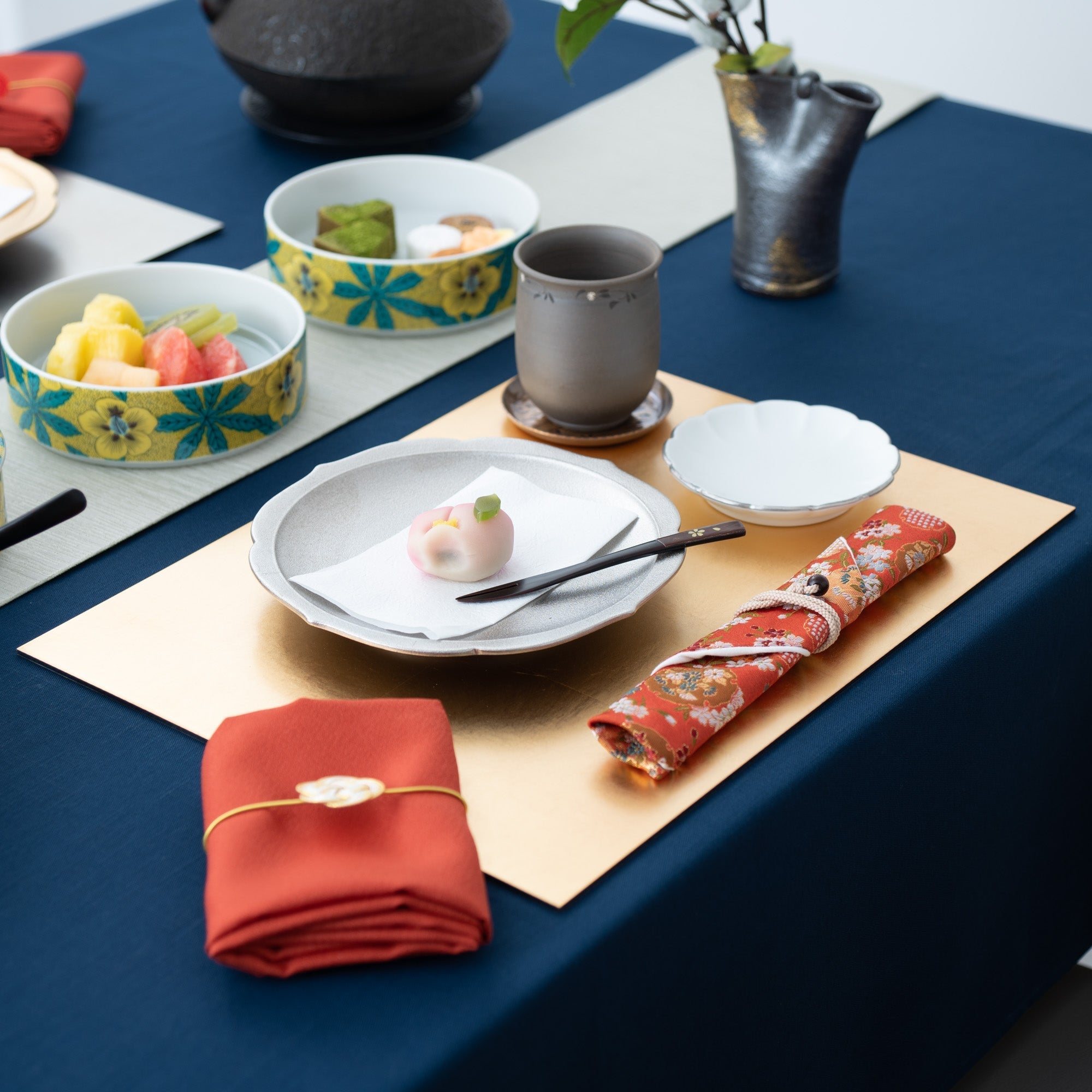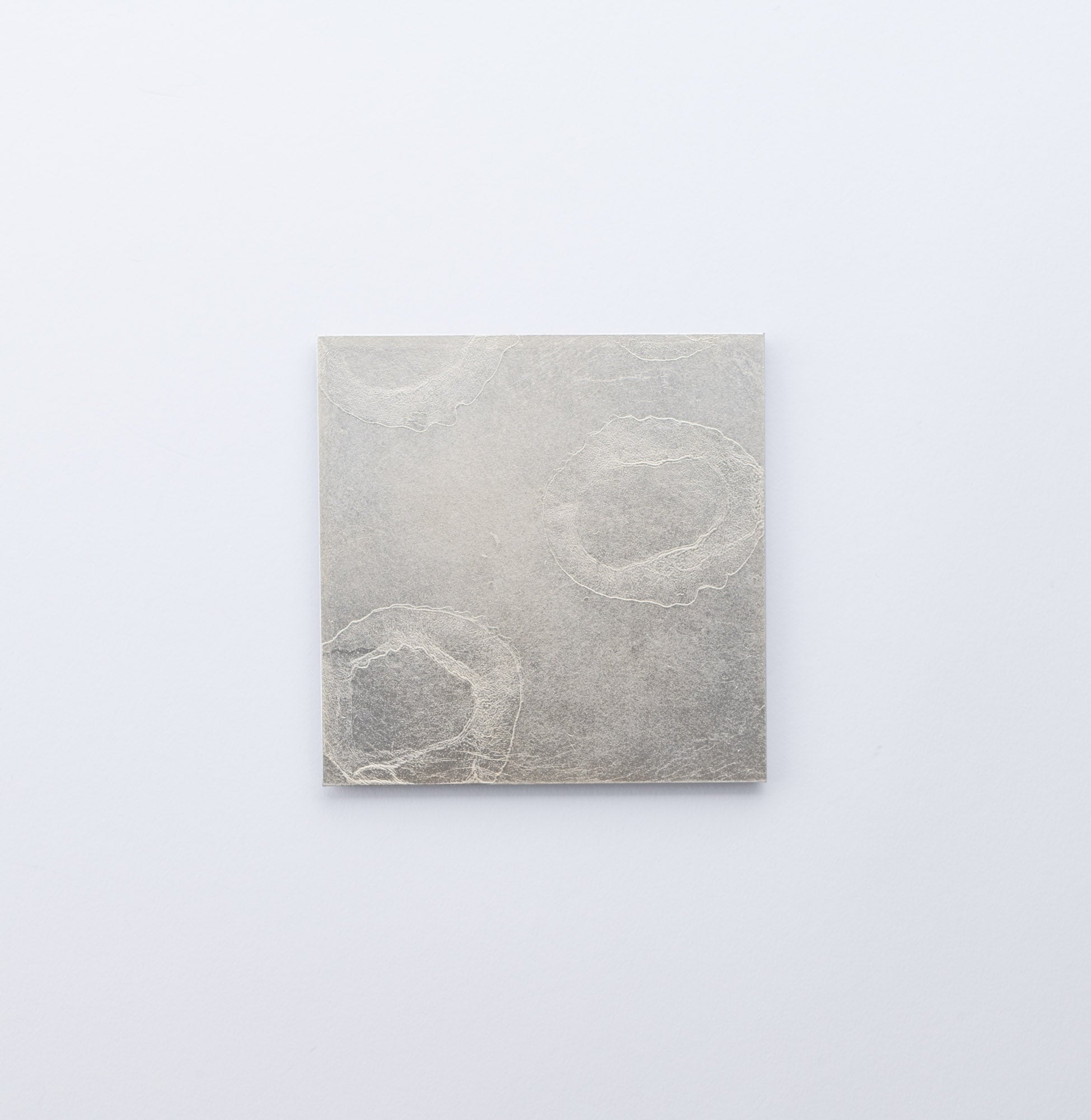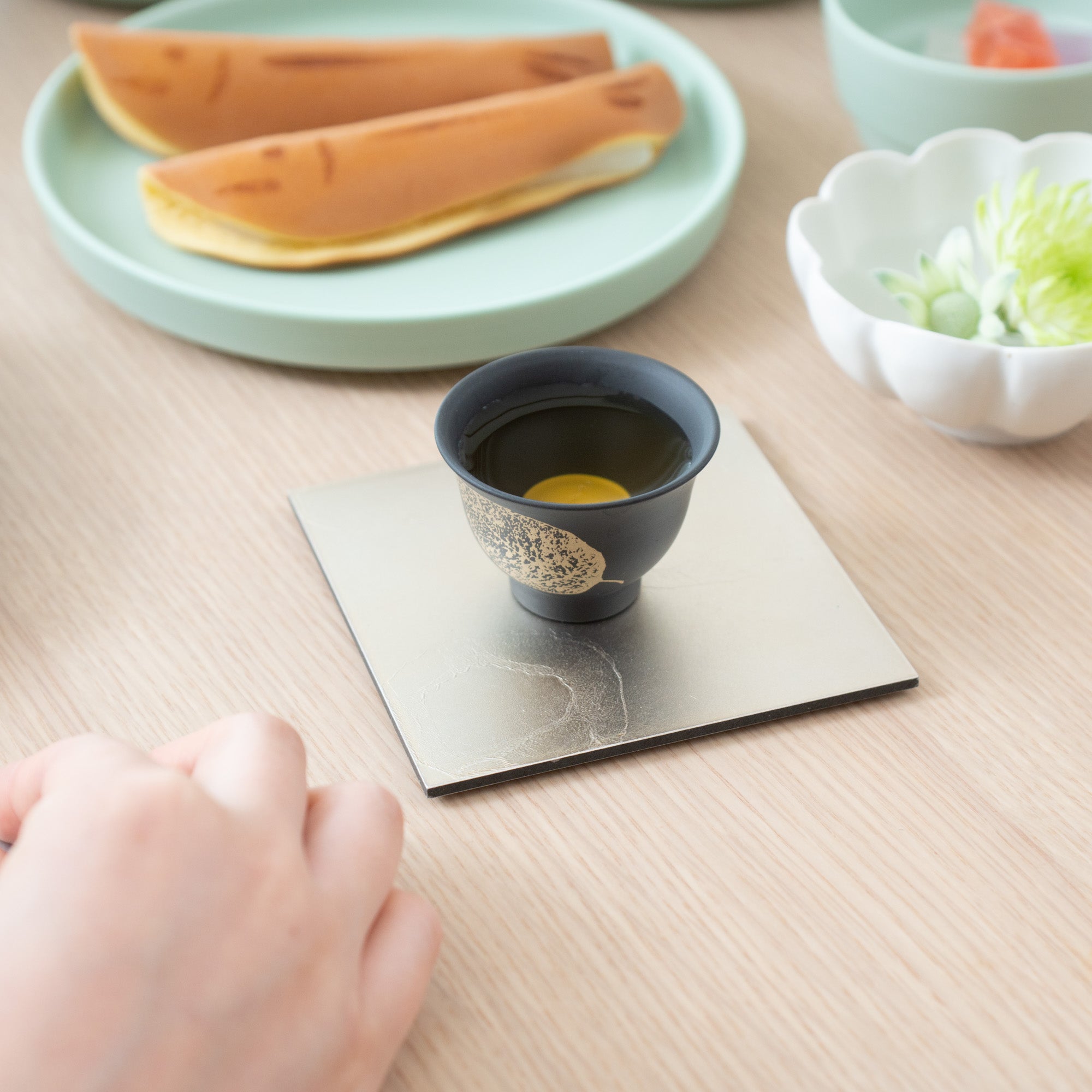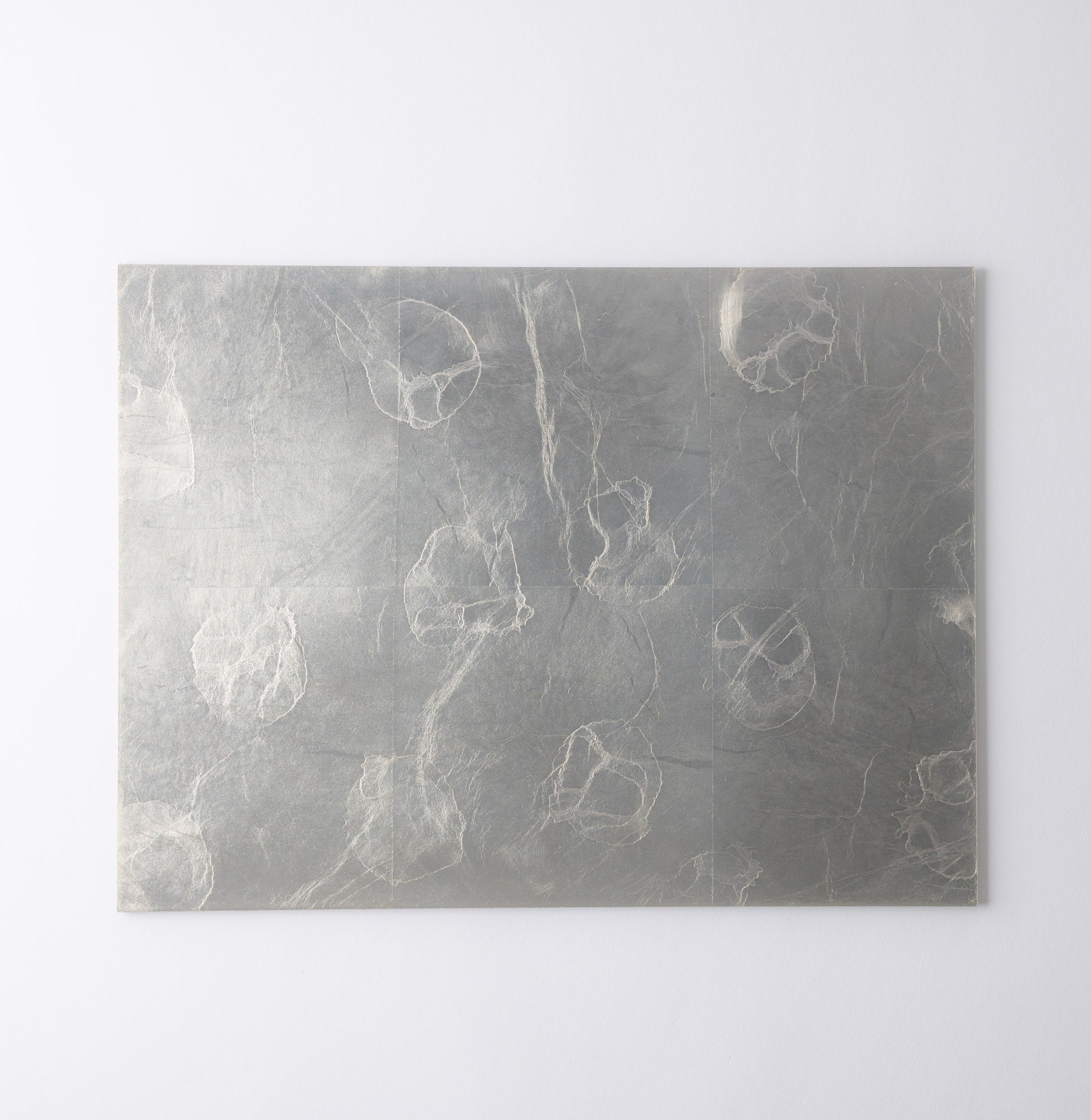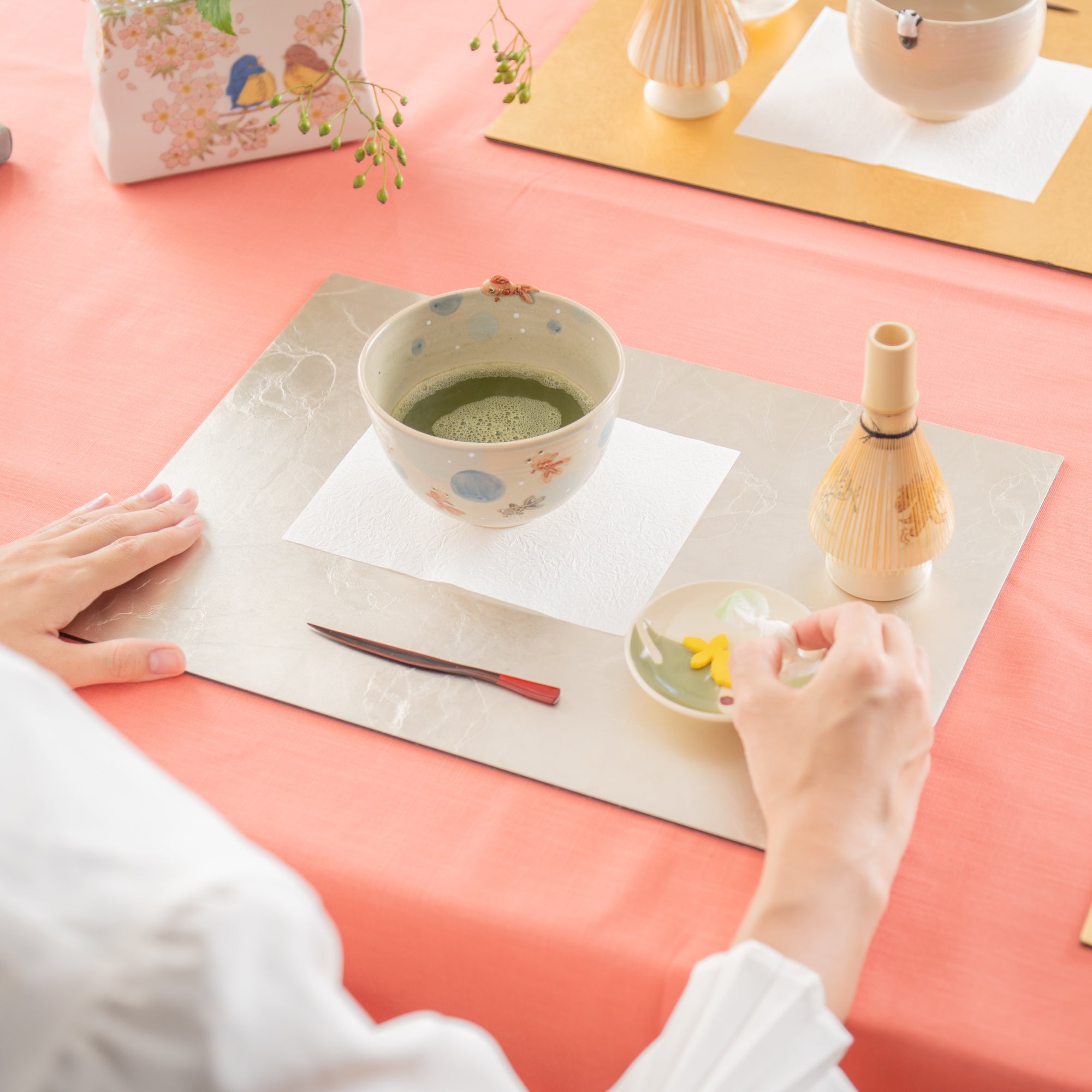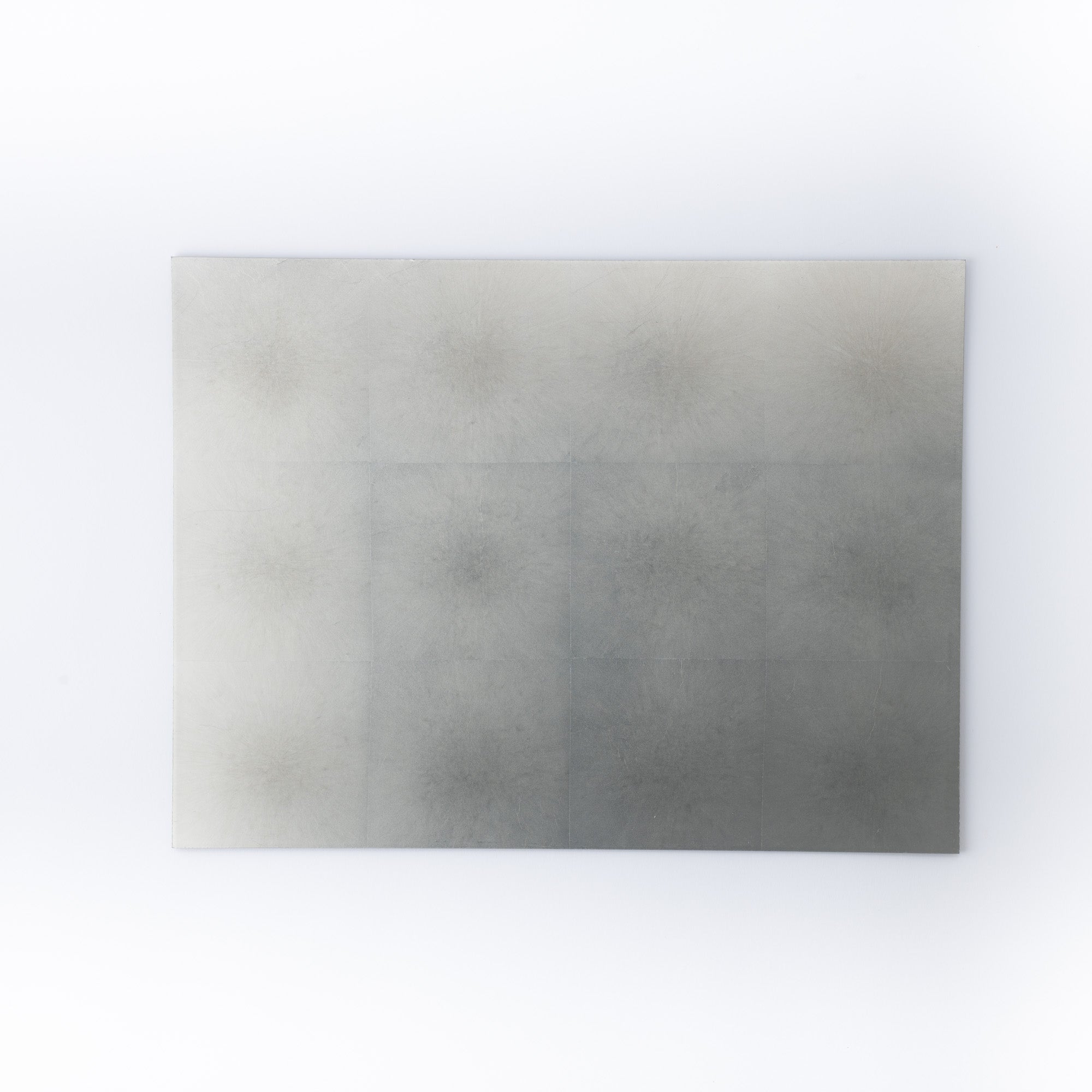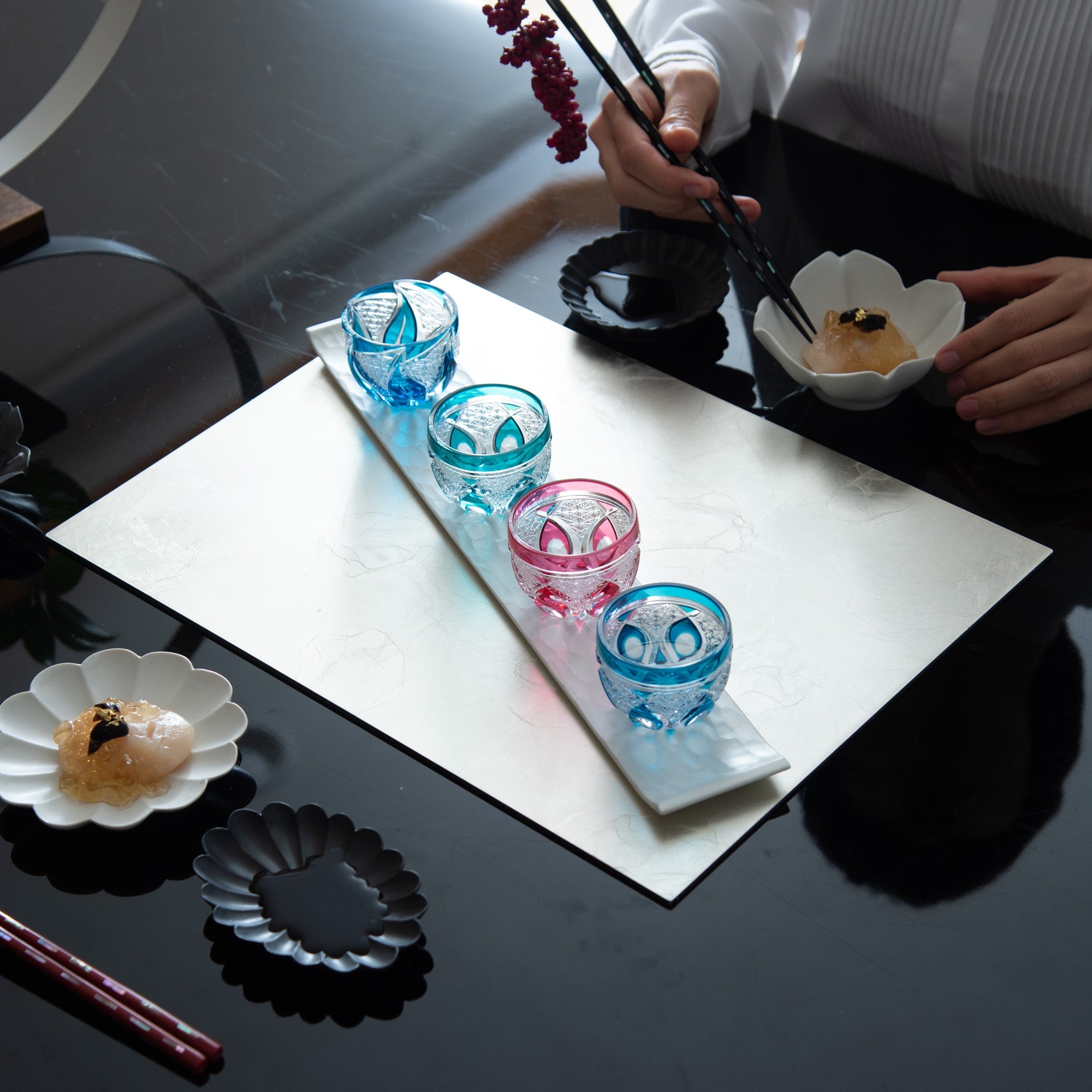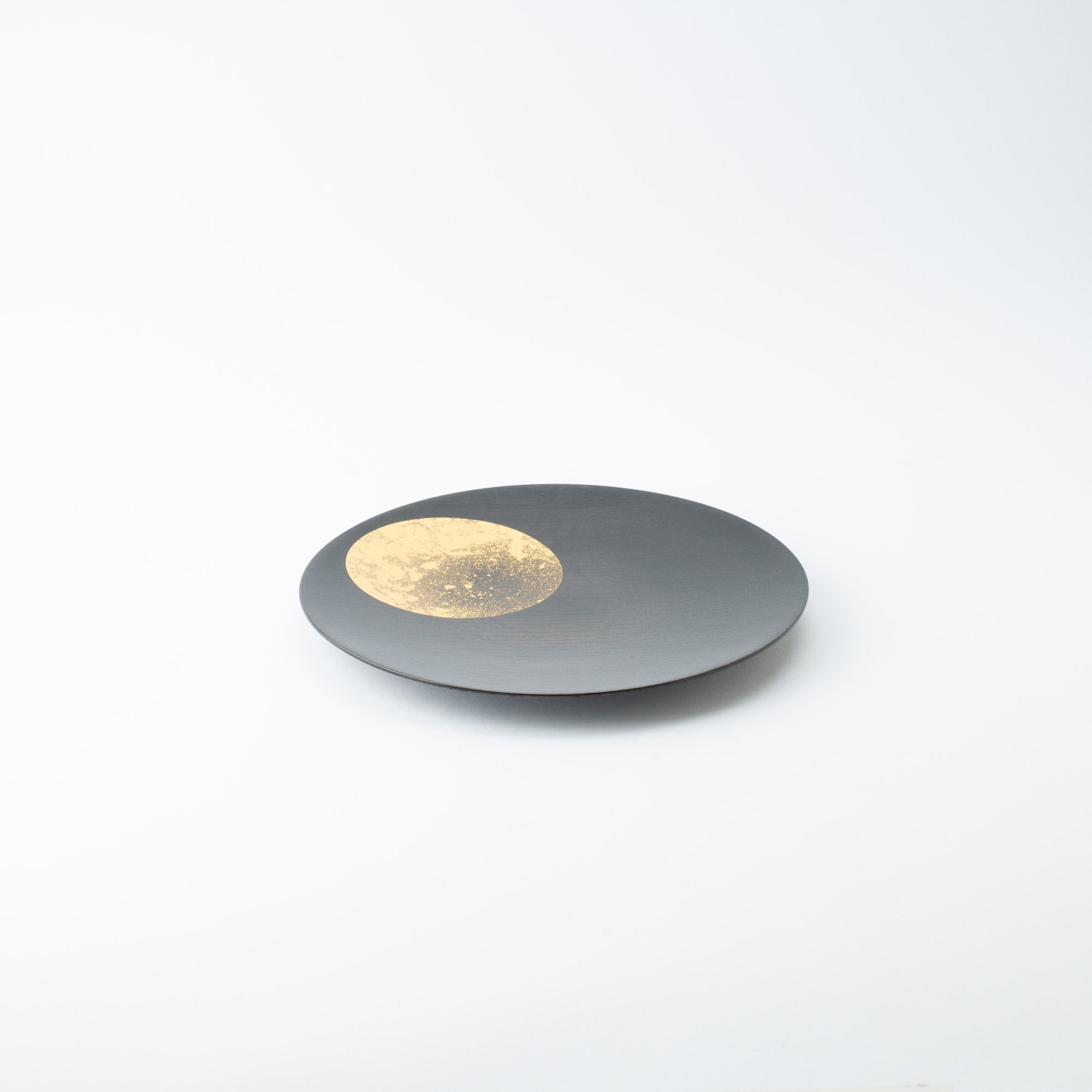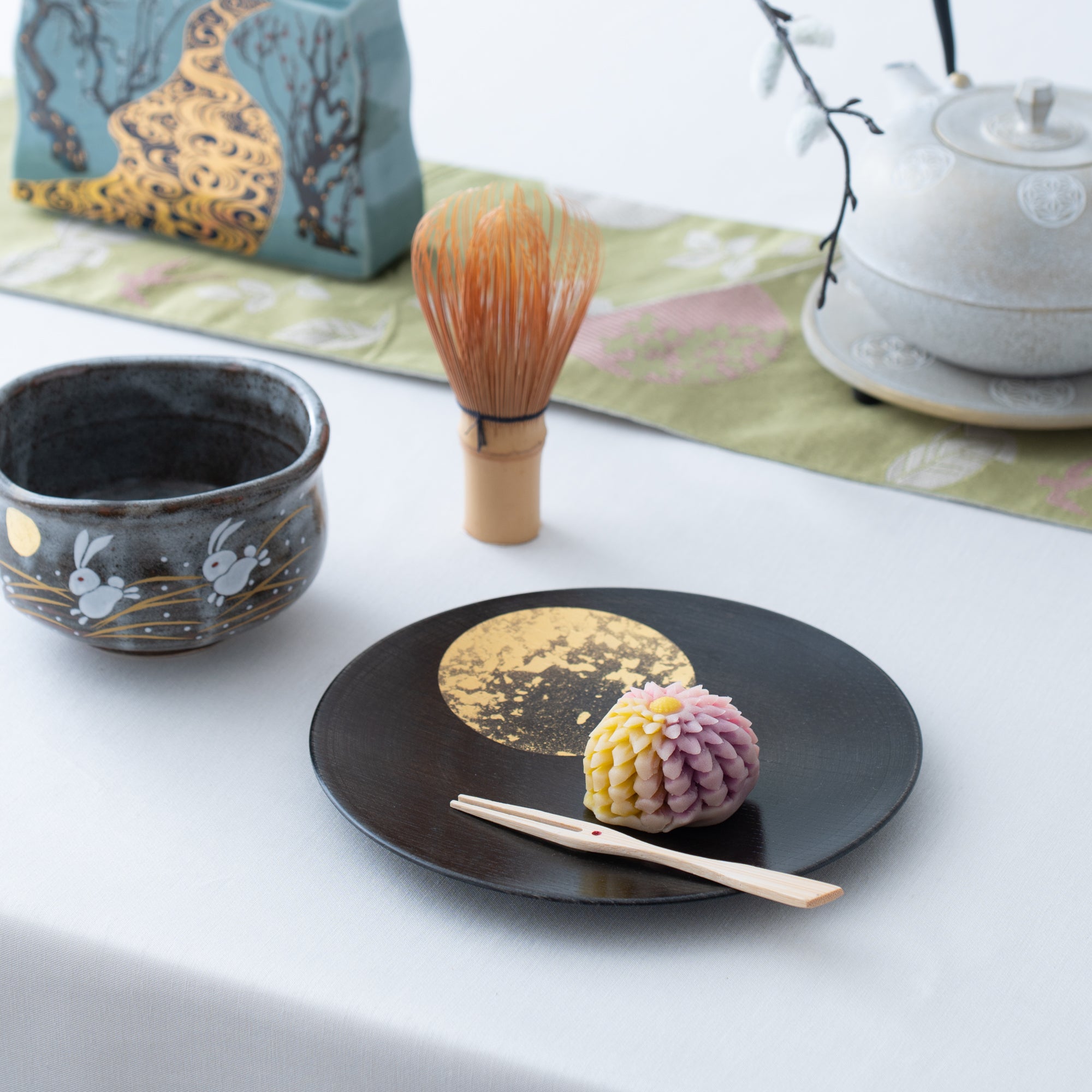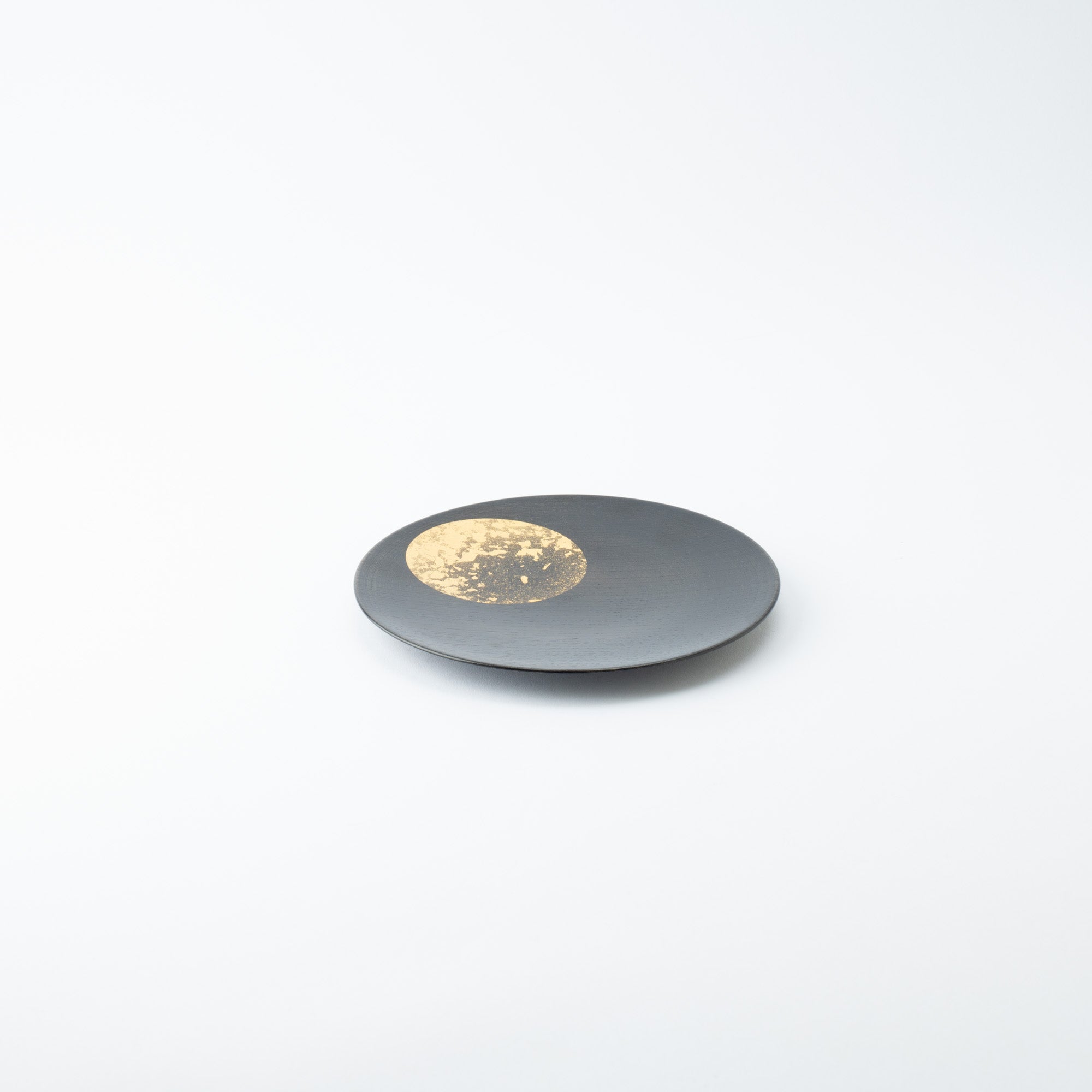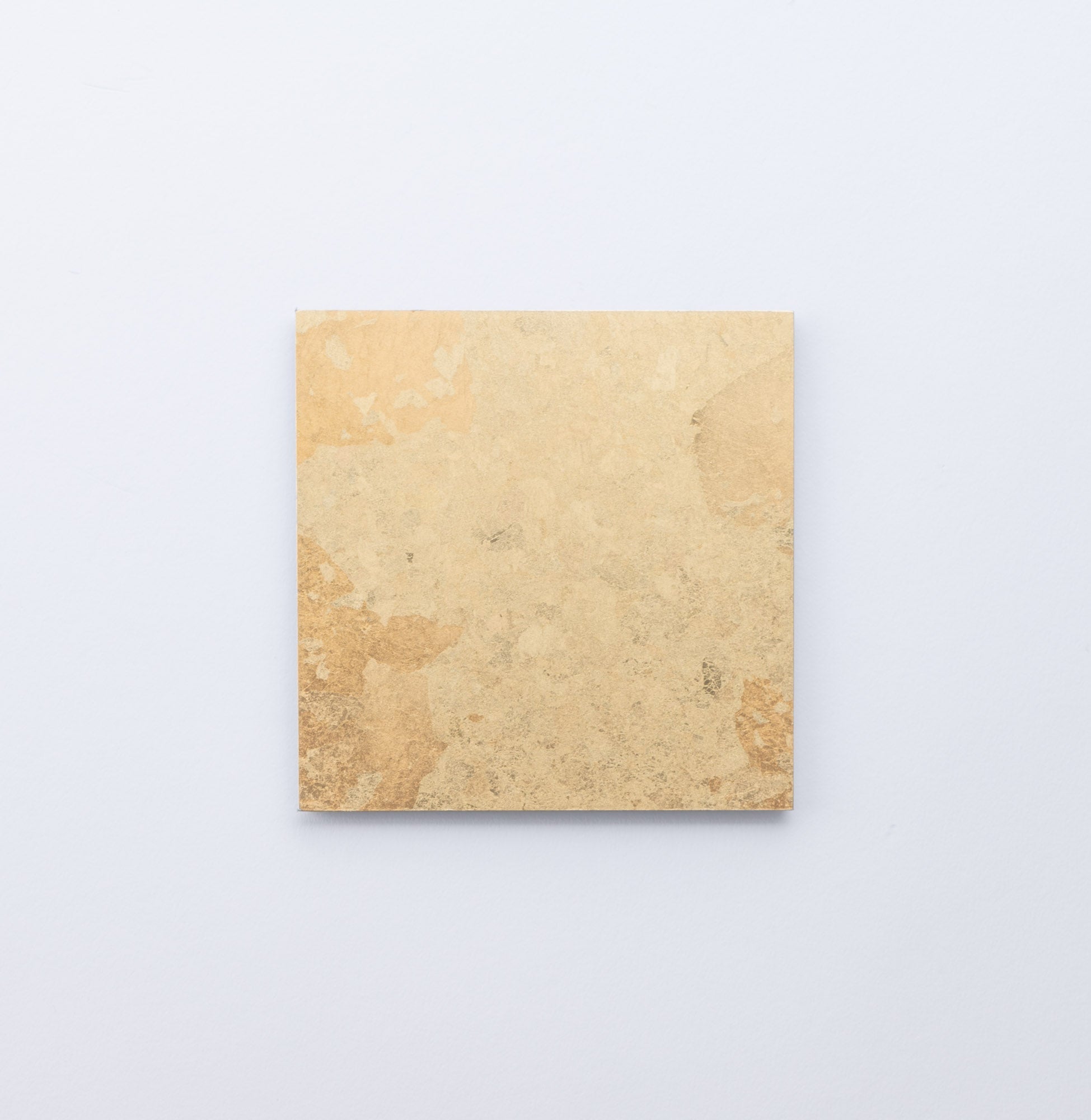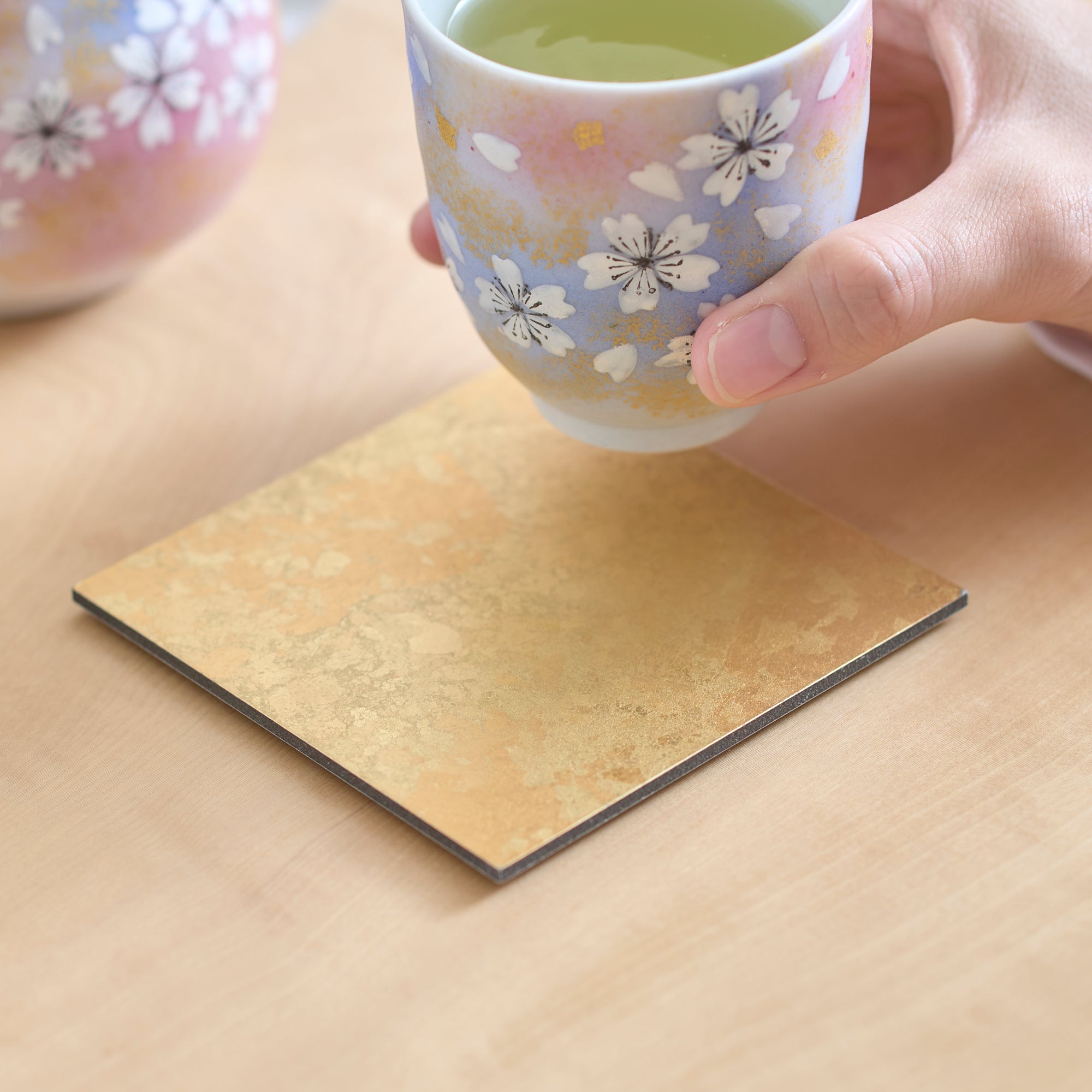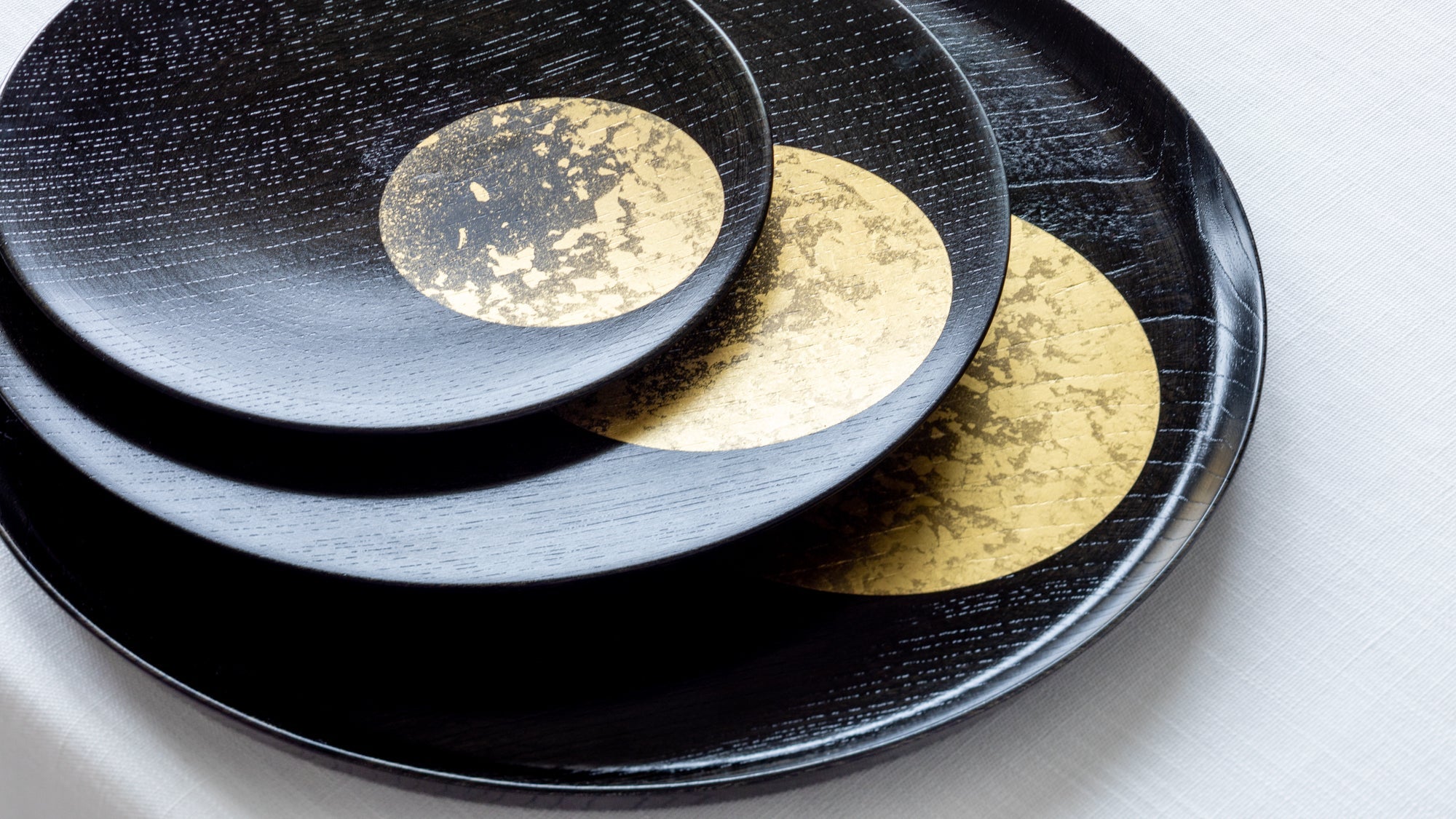
Hakuichi
Founded in Kanazawa in 1975, Hakuichi has become a leading name in Japanese gold leaf, carrying on a tradition central to the city’s identity. The company crafts tableware items such as Kanazawa gold leaf coasters, placemats, chopstick rests, and plates, along with kakejiku hanging scrolls, a form of Japanese wall art, and other pieces for interior décor.
At Hakuichi, gold is hammered into ultra-thin sheets and applied with meticulous care, combining centuries-old techniques with modern design to create everyday objects that are both functional and timeless works of art.
Hakuichi's history began when the founder, Asano Kuniko, a Kyoto woman, married into the family of a metal leaf manufacturer in Kanazawa and set up a craft manufacturing business to promote the beauty of Kanazawa gold leaf. Today, "Kanazawa gold leaf craft" is widely known as a traditional craft representing Ishikawa Prefecture. However, even though more than 98% of Japan's gold leaf was produced in Kanazawa, at the time of its founding in 1975, it was only used as a material for high-end crafts and Buddhist altars in other regions, and was not a craft representing the name of Kanazawa.
Originally, ornaments and crafts using gold leaf were made with the utmost luxury and splendor as a symbol of power and ostentation throughout the long history of Kanazawa. However, in order to convey the beauty of Kanazawa gold leaf to a wider audience, Hakuichi started out with products for daily use rather than luxury items. "Kanazawa gold leaf craft" was known only for traditional items such as plates, jubako bento boxes, and tea saucers, but Hakuichi expanded collaboration projects with different industries to dispel its old-fashioned image. Hakuichi's challenge of expanding the world of Kanazawa Gold Leaf from Kanazawa to overseas will continue to attract people.
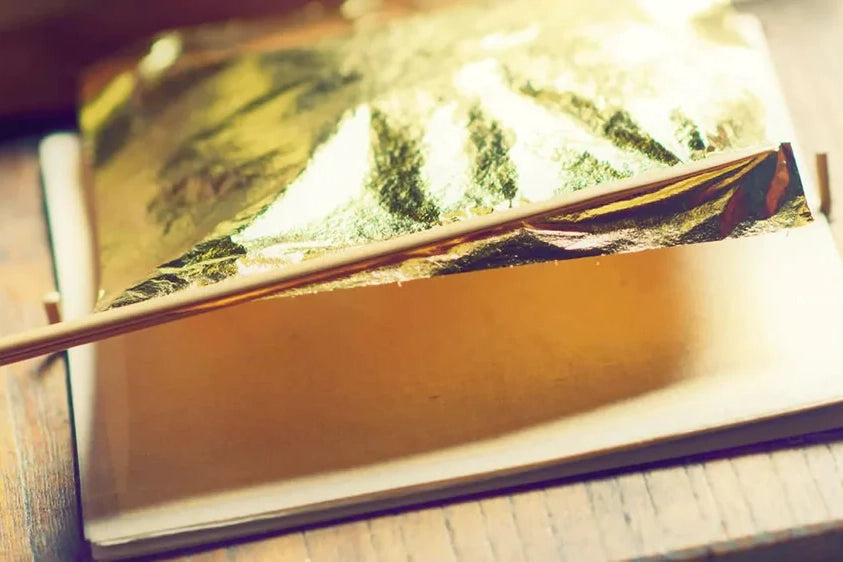
Hakuichi is actively contributing to the SDGs (Sustainable Development Goals). As a company engaged in traditional industries, they continue to review the values that have been handed down to us and make the following efforts toward the realization of a sustainable world.
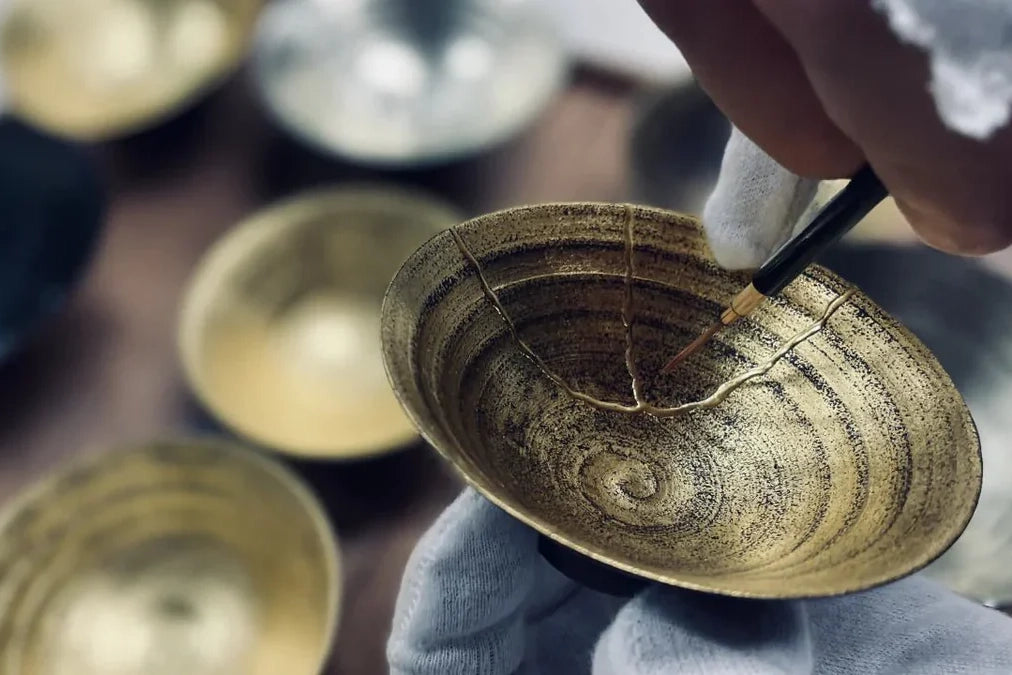
1. Education for Local Children
Hakuichi offers online and on-site gold leaf-applying experiences. During the Tokyo 2020 Olympics, they introduced local culture to the national teams from Norway and other countries in the midst of the pandemic. They invite local parents and children to our workshop to learn about the Kanazawa gold leaf production process to help them develop an interest in local traditional culture and a sense of pride in their community.
2. Preservation of the LandscapeIn
Cooperation with the local government and local residents, Hakuichi is working to preserve the landscape of the Higashi Chaya district and other areas in Kanazawa city. They purchase and repair old private houses that have become difficult to maintain in areas designated for heavy-duty construction, restoring their elegant exteriors and improving their earthquake and fire resistance.
3. Support for Restoration and Reuse by Kintsugi
Traditional crafts have inherited repair techniques. Kintsugi is a typical example. They propose kintsugi to help people to cherish and use their traditional crafts.
They are also working to eliminate waste at our factories and to change spoons and shopping bags used in their stores to environmentally friendly materials. These efforts reflect Hakuichi's desire to develop traditional industries while considering both the responsibility of making and using products.
Makers
Related posts
Filters


